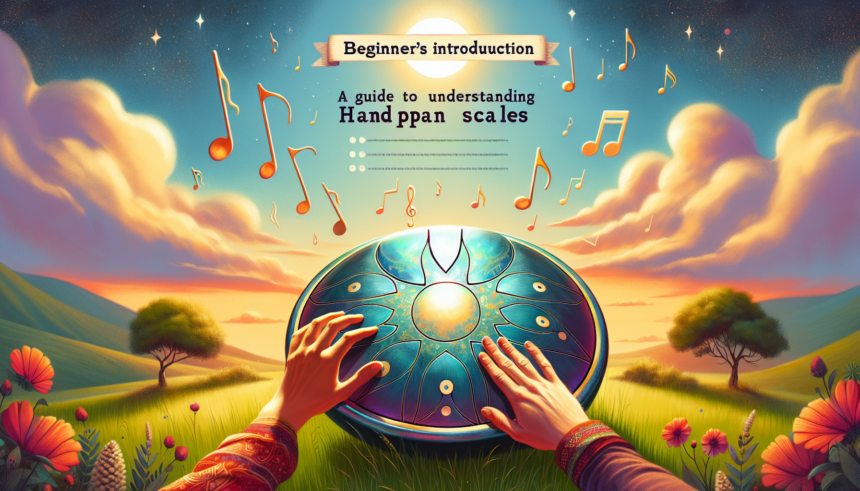Introduction
The handpan is a captivating instrument that produces enchanting, ethereal sounds. It has gained popularity due to its beautiful resonance and ease of play. However, for beginners, understanding the various scales available can seem daunting. Choosing the right scale is crucial as it influences the mood and style of the music you create. This guide will help you navigate the world of handpan scales, making it easier to pick the one that suits you best.
What Are Handpan Scales?
Handpan scales are a specific set of notes that determine the melody and harmony options available on a handpan. Unlike traditional instruments, handpans typically have 7-9 notes, each arranged in a specific scale. These scales can range from major, minor, harmonic minor, to exotic scales like the Hijaz or the Pygmy scale. Understanding these scales can help you create music that resonates with the emotions and themes you desire to express.
Major and Minor Scales
Major Scales: These scales are often described as happy, uplifting, and positive. They are commonly used in Western music and are great for creating joyful and energetic tunes. A popular major scale for handpans is the D Major. It is versatile and easy to play, making it an excellent choice for beginners.
Minor Scales: Minor scales have a more melancholic, emotional, and sometimes mysterious feel. They are perfect for expressing deeper, more introspective emotions. The D Minor scale is a favorite among handpan players. It offers a beautiful balance of accessibility for beginners and the depth needed for more intricate compositions.
Exotic Scales
Exotic scales, also known as modes, can add a unique flavor to your music. These scales often originate from different cultures and can infuse your music with an intriguing and sometimes otherworldly feel. Some popular exotic scales include:
- Hijaz Scale: This scale has an Arabic flavor and is known for its rich, evocative quality.
- Pygmy Scale: Typical in traditional African music, it creates a rhythmic, earthy sound.
- Celtic Minor Scale: Perfect for creating haunting, mystical melodies reminiscent of ancient Celtic music.
Choosing Your First Handpan Scale
When selecting your first handpan, consider the following factors:
- Your Music Preferences: Do you prefer uplifting melodies (major scales) or more emotional, introspective tunes (minor scales)? Or perhaps you’re drawn to the unique sounds of exotic scales?
- Playing Experience: For beginners, opting for a handpan with a straightforward scale (like D Major or D Minor) might be beneficial. These scales are not only versatile but also easier to play.
- Intended Use: Are you looking to accompany other instruments or solo play? Some scales blend better with other instruments, while others shine in solo performances.
Common Handpan Scales for Beginners
For those starting their handpan journey, here are a few scales that are generally recommended for beginners:
- D Major: Uplifting and joyful, it’s a versatile scale that fits well in various music genres.
- D Minor: A perfect choice for those who wish to explore emotional and introspective music.
- Celtic Minor: Ideal for creating hauntingly beautiful melodies, making it a favorite among many players.
- Integral: Often considered the default scale for handpans, offering a balanced yet rich sound.
How to Practice and Get Comfortable with Your Handpan Scale
Here are some tips for practicing and getting comfortable with your chosen handpan scale:
- Learn the Layout: Familiarize yourself with the layout of the notes on your handpan. Practice striking each note and get comfortable with their positions.
- Start Slow: Begin with simple, slow patterns. This will help you develop muscle memory and understand the sound of each note.
- Explore Chords: Experiment with playing two or more notes simultaneously to create chords. This can add depth to your music.
- Practice Transitions: Smooth transitions between notes can make your playing more fluid. Practice moving from one note to another seamlessly.
- Improvise: Once you’re comfortable with the basics, try improvising. This can help you develop your own style and become more comfortable with the scale.
Conclusion
Understanding handpan scales is an essential step in your journey to mastering this beautiful instrument. Each scale offers a unique palette of sounds and emotions, allowing you to express yourself in diverse ways. By exploring various scales and practicing regularly, you’ll find the ones that resonate most with you. Remember, the goal is to enjoy the process and let your creativity flow. With time and practice, your connection with your handpan will deepen, and your music will soar.
Frequently Asked Questions
1. What is the easiest handpan scale for beginners?
The D Major and D Minor scales are often recommended for beginners due to their straightforward and versatile nature. They are easier to play and offer a wide range of musical possibilities.
2. Can I play different genres of music with a single handpan scale?
Yes, many handpan scales are versatile enough to fit various music genres. For example, the D Major scale can be used for uplifting melodies as well as more reflective pieces, depending on how you play it.
3. How many notes does a typical handpan have?
Most handpans have between 7 to 9 notes, though some custom handpans can have more or fewer notes. The arrangement and number of notes are designed to fit specific scales.
4. What is the difference between a major and a minor scale on the handpan?
Major scales typically create a happy, uplifting sound, while minor scales are associated with more melancholic, emotional, and introspective music. The choice between major and minor will depend on the mood you want to convey in your music.
5. Should I start with a handpan that has an exotic scale?
While exotic scales can add a unique flavor to your music, they might be more challenging for beginners. It is often advisable to start with a major or minor scale to build a solid foundation before exploring more complex scales.





